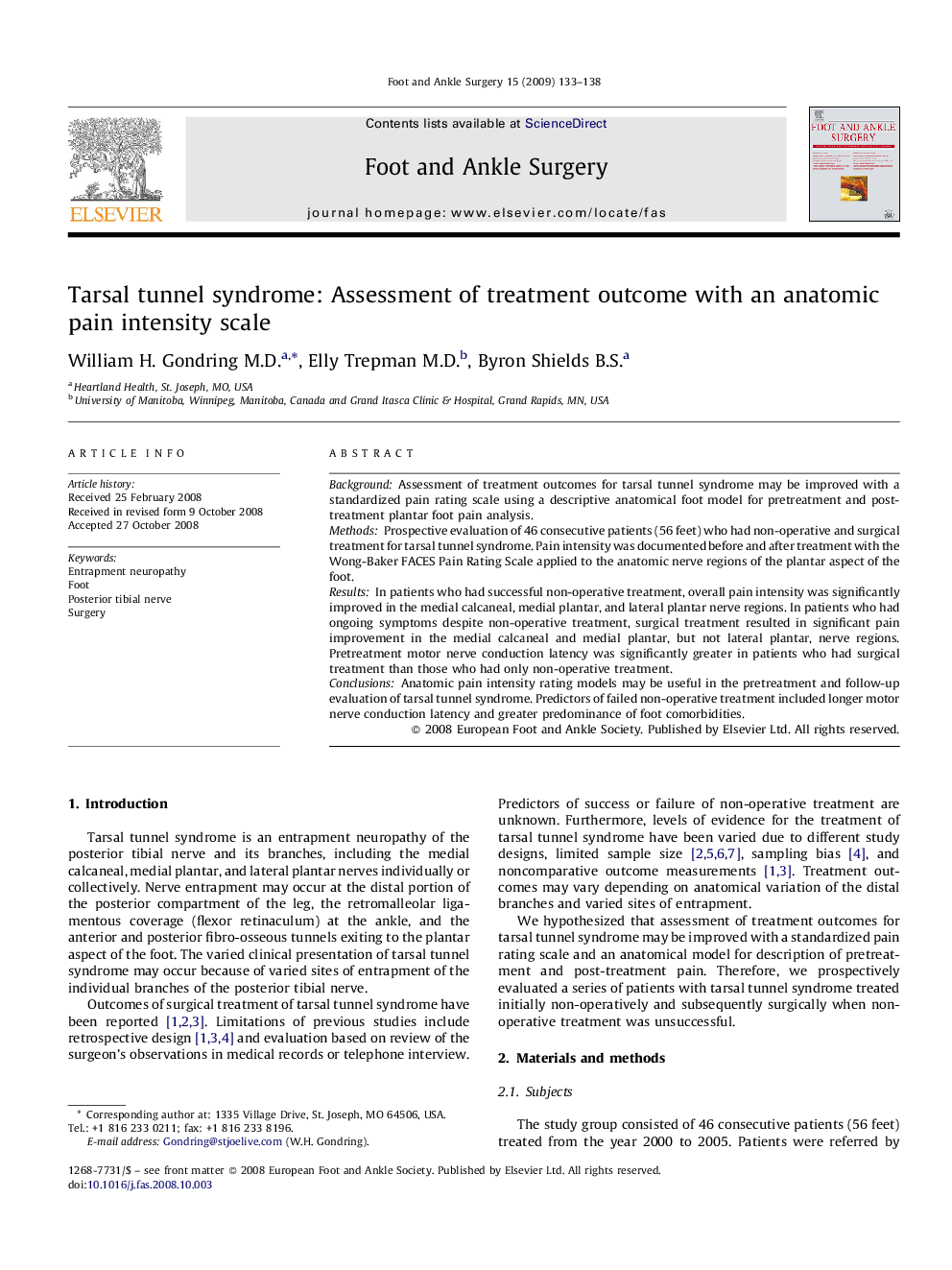| Article ID | Journal | Published Year | Pages | File Type |
|---|---|---|---|---|
| 4054906 | Foot and Ankle Surgery | 2009 | 6 Pages |
BackgroundAssessment of treatment outcomes for tarsal tunnel syndrome may be improved with a standardized pain rating scale using a descriptive anatomical foot model for pretreatment and post-treatment plantar foot pain analysis.MethodsProspective evaluation of 46 consecutive patients (56 feet) who had non-operative and surgical treatment for tarsal tunnel syndrome. Pain intensity was documented before and after treatment with the Wong-Baker FACES Pain Rating Scale applied to the anatomic nerve regions of the plantar aspect of the foot.ResultsIn patients who had successful non-operative treatment, overall pain intensity was significantly improved in the medial calcaneal, medial plantar, and lateral plantar nerve regions. In patients who had ongoing symptoms despite non-operative treatment, surgical treatment resulted in significant pain improvement in the medial calcaneal and medial plantar, but not lateral plantar, nerve regions. Pretreatment motor nerve conduction latency was significantly greater in patients who had surgical treatment than those who had only non-operative treatment.ConclusionsAnatomic pain intensity rating models may be useful in the pretreatment and follow-up evaluation of tarsal tunnel syndrome. Predictors of failed non-operative treatment included longer motor nerve conduction latency and greater predominance of foot comorbidities.
